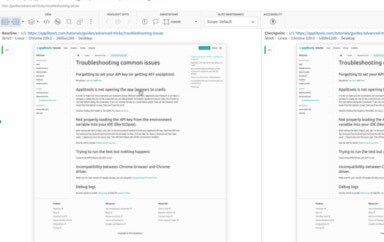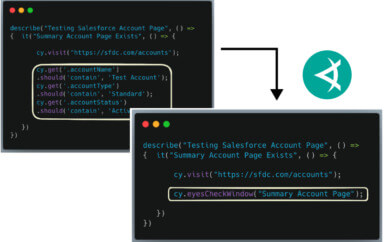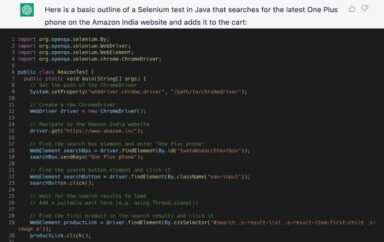While everyone knows that printed newspaper sales are dwindling, the interesting story is in online subscriptions, which are exploding. Electronic Medical Records (EMR) are becoming the new normal, eliminating lookup, replacement and a whole lot of printing. The Plain Old Telephone system (POTS), which phone poles and a separate physical wire into the house are falling into disrepair but anyone under 30 is unlikely to notice because they do not have a physical landline phone.
The digital transformation is in full swing and the consequences are everywhere.
Can software testers help smooth digital transformations with visual UI testing?
I think so.
Quick Response to Customer Needs
Several years ago I was working on a software product used by nurses and anaesthesiologist. Our software was meant to be a bridge between the world of paper charting and a completely paperless workflow. Our initial offering was a digital pen solution. Doctors would use a special electronic pen to write on forms that looked no different from what they used daily for years. At the end of the day, a doctor or nurse syncs the pen to a computer using a USB cable, and all of those forms were magically transferred to our dashboard. The flow from documenting with a pen to having digital patient information was supposed to be as close to what the doctors normally do as possible.
The next stage in this product was something completely new, an iPad app.
The further a software company moves from a workflow people have been using for the last 20 years, the more problems they will encounter. Starting a transformation with a visual UI testing strategy can help software makers respond to customer needs before the customers realize they have them. Visual testing tools provide instant feedback on the look and feel of your product with every build. Rather than building a new feature and waiting for the market to give feedback you can build a prototype, get user experience feedback from a customer champion, and make that your visual baseline.
Cross Platform Delivery
Before a digital transformation, companies might deal in one medium. For the doctors we were supporting, that was pen and paper. This product ran in a few versions of Internet Explorer, as well as 5 or 6 mobile platforms. Using visual testing, we could have had a better feel for consistency across platforms and devices.
A visual UI testing strategy simplifies the cross-platform testing problem. Start with a complete scan of the elements on each page of the browser you care about the most. This baseline gives you a reference point for every other place you need to test, and also is a way to explore the full feature set in your product. Once you have that baseline, you can run your visual UI testing suite in Continuous Integration and discover how each platform and operating system – iOS, Android, iPad, iPad mini, Google Tablets, and a variety of mobile phones – are different. Your development team will discover that an iPhone 6 running iOS 8 is missing a submit button that displays perfectly everywhere else before your customers.
Dealing with Humans
Software customers tend to be change averse. Take something that might be clunky, but has worked for them for the past 20 years, and turn it into software. What usually happens here is shelf-ware, products that get no use because people either couldn’t figure out how to use them or the new software was more painful than what they had before. This pain can come from software bugs, it can come from bad design, or it can come from normal ways of working before being completely absent from the new software solution. Consistency is one of the most important factors for a successful digital transformation. A visual UI testing strategy will give your development team an early alert on how your products are different between browsers and platforms. That means an easier digital transformation for your customers.
To read more about Applitools’ visual UI testing and Application Visual Management (AVM) solutions, check out the resources section on the Applitools website. To get started with Applitools, request a demo or sign up for a free Applitools account.







